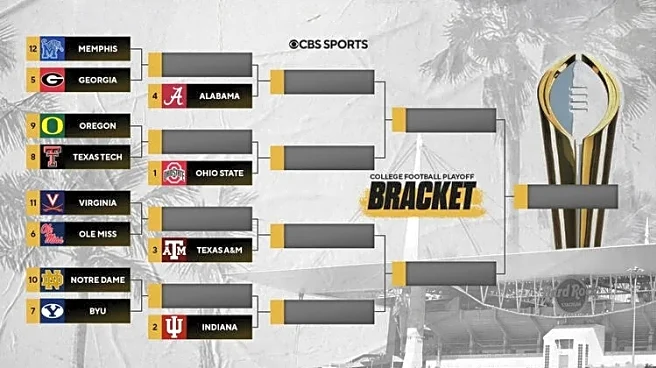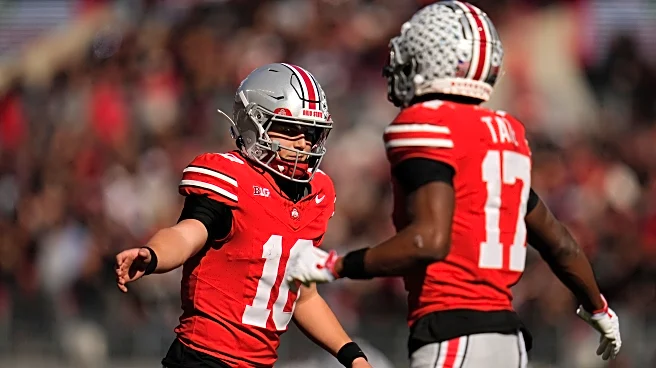What's Happening?
The College Football Playoff (CFP) committee has announced a significant change to the seeding system for the 2025 season. This year, the committee will implement straight seeding, which means the four
first-round byes will no longer automatically go to the highest-seeded conference champions. Instead, the top five conference champions will still receive automatic bids into the playoff, but a team could potentially lose a conference championship game and still earn a first-round bye. The CFP will begin on December 19, with the L.A. Bowl kicking off the bowl season on December 13. Early predictions for non-CFP bowl games include matchups such as SMU vs. Arizona in the Sun Bowl and Michigan vs. Texas in the Citrus Bowl.
Why It's Important?
This change in the seeding system could have significant implications for college football teams and their strategies. By not guaranteeing first-round byes to conference champions, the CFP committee is allowing more flexibility in the playoff structure, potentially increasing the competitiveness of the playoff race. Teams that may not win their conference championship could still have a chance to compete for the national title, which could lead to more dynamic and unpredictable playoff scenarios. This decision may also impact how teams approach their regular season and conference games, knowing that a loss in a championship game does not necessarily eliminate them from playoff contention.
What's Next?
As the regular season progresses, teams will need to adapt to this new seeding system and strategize accordingly. The upcoming matchups, such as the November 15 game between No. 11 Oklahoma and No. 4 Alabama, will be crucial in determining playoff positions. Teams like Missouri, ranked 22nd by the CFP committee, will need to secure key victories to improve their chances of making the playoffs. The introduction of straight seeding may also prompt discussions among coaches and athletic directors about the future of conference championships and their role in the playoff system.
Beyond the Headlines
The decision to change the seeding system reflects broader trends in college sports, where traditional structures are increasingly being reevaluated to enhance competitiveness and viewer engagement. This move could lead to further discussions about the balance between conference championships and national playoff opportunities, potentially influencing future decisions in other sports leagues. Additionally, the change may impact the financial aspects of college football, as teams and conferences adjust their strategies to maximize their chances of playoff success.













